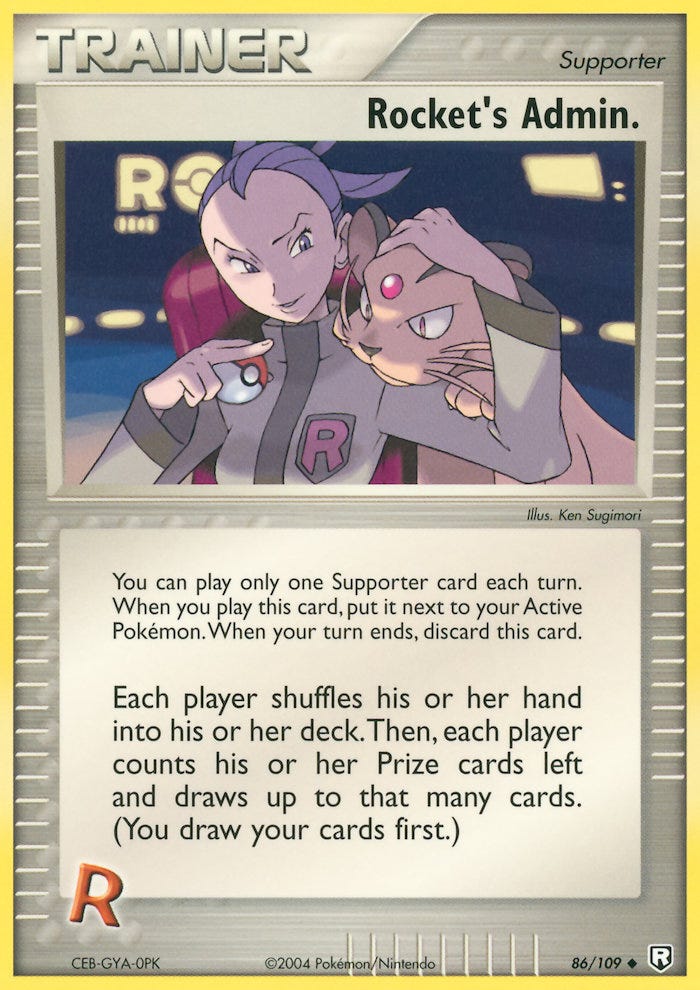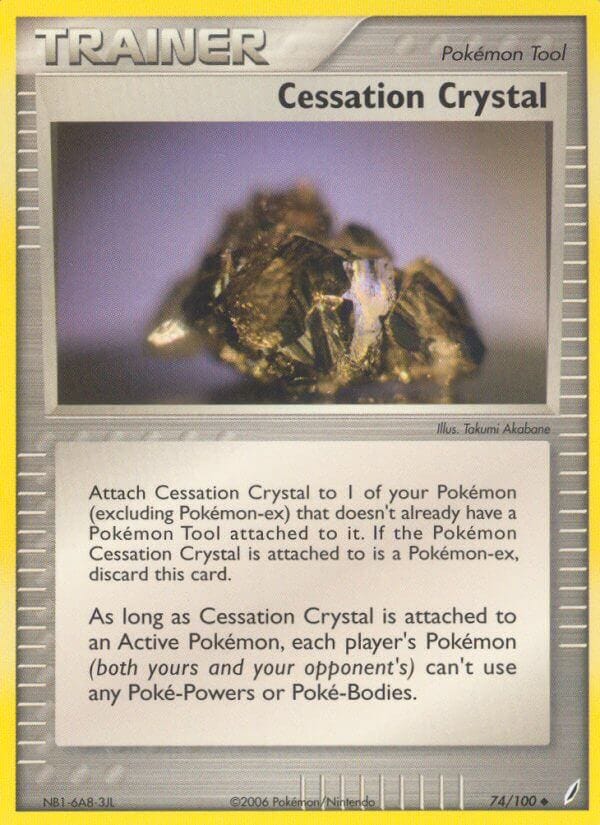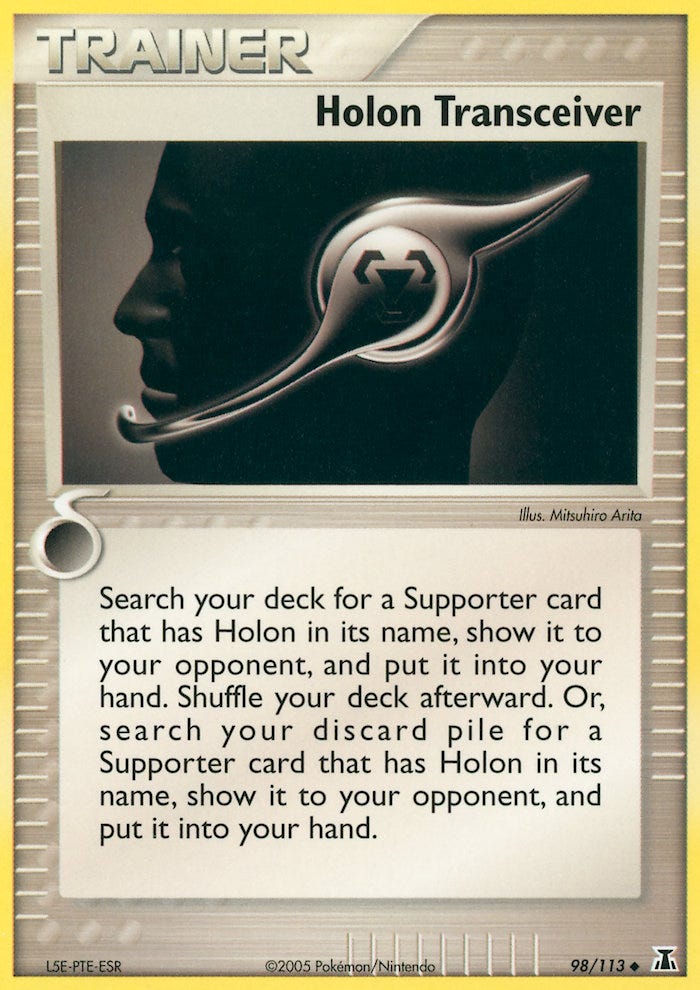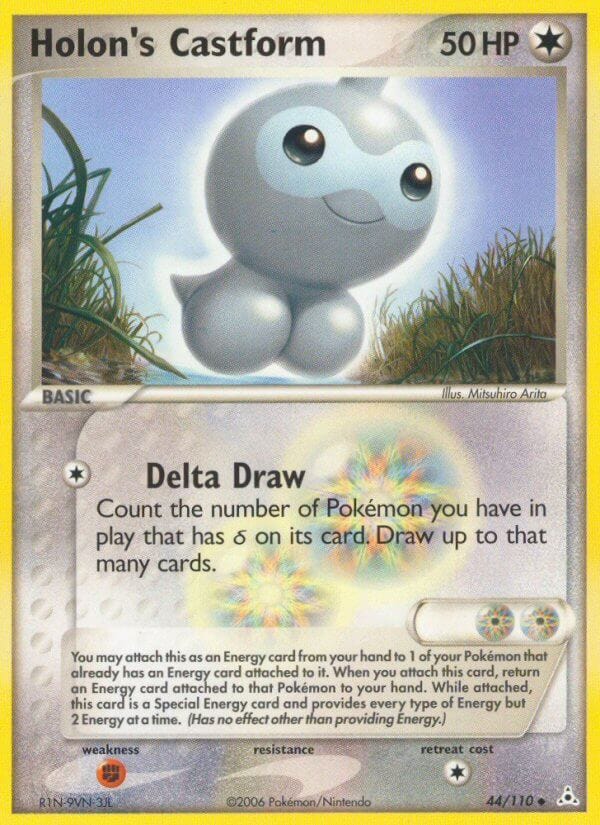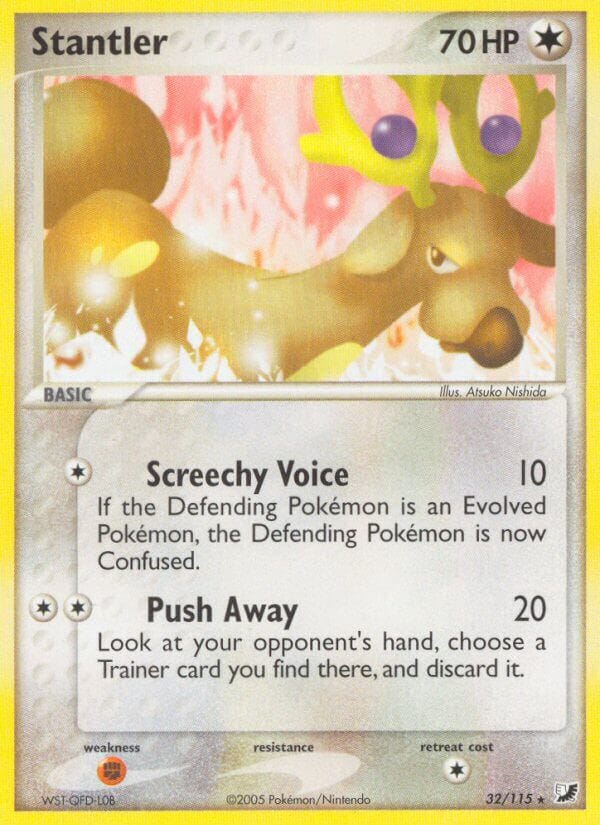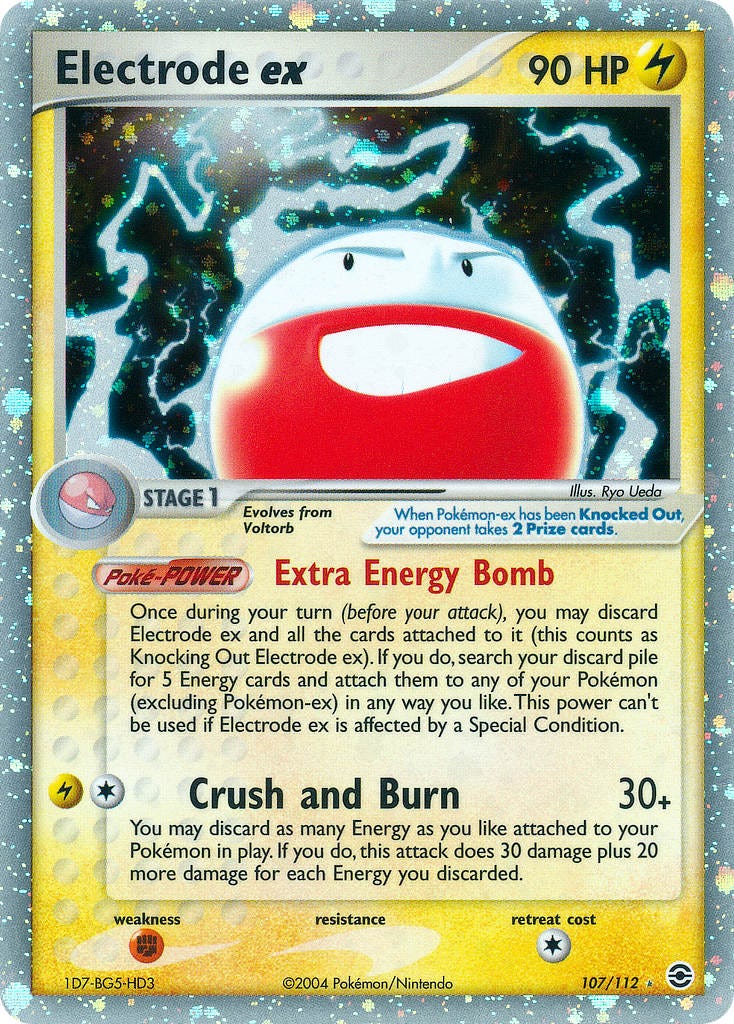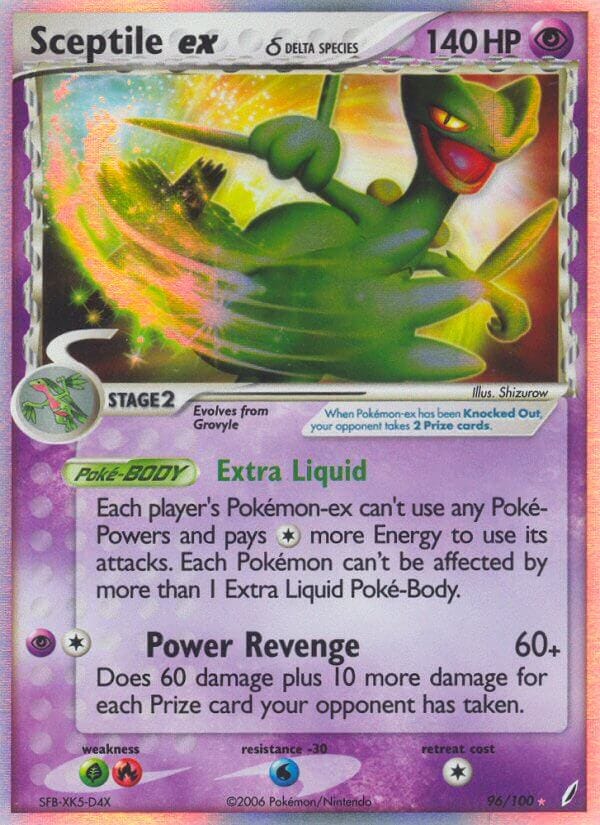The Standard Player's Guide to RS-PK
The best format to never exist doesn't have to be daunting.
For those who hold even a vague interest in but don’t play retro Pokemon, the barrier to entry is always expressed basically the same way: “it’s expensive and I don’t understand how the cards work”. Issues on finances can always be solved with a printer and 60 basic energies (or playing on TCGONE), but the concerns on the changing game landscape are valid given how much the design space has morphed in the last 25 years of the TCG. Luckily, this can also be easily overcome, and the premise of this article is to put you on your merry way getting to grips with the best and fastest growing way to play retro Pokemon: EX Ruby Sapphire to EX Power Keepers.
Below I will outline a bit of backstory to the format, the basic rules and design differences, and then explain the cards most crucial to understand in order to start getting games in.
NB: This article is designed for players already familiar with the current rule set of the Pokemon TCG.
Backstory and Why RS-PK Might Be For You
RS-PK is a block format, meaning all of the cards printed during the gen 3 era of the game are legal for play. We never had this format in the west, but in Japan they were far closer, with an official format with all sets except EX Power Keepers. Playing this as a retro format started slowly becoming popular in Japan in 2015, with official tournaments starting to be held in 2018. In the west, it wasn’t until Jason Klaczynski’s blog and the introduction of TCGONE in 2021 that allowed the format to take off.
So what’s the appeal? Putting aside less tangible things like nostalgia, there is lots that draws people to RS-PK. Below are a few examples:
Games are grindy and regularly go long. For situations without weakness, OHKOs are pretty uncommon, and so games end up turning into wars of attrition, with players spreading damage and resources in order to come out on top. Most decks play high counts of low power set-up supporters, meaning that being overrun within the first few turns of the game in uncommon.
1 and 2 prize cards are more balanced. In gen 3, ex cards do get significant HP boosts compared to their non-ex counterparts, but the difference is not nearly as stark as in current standard format where the attacking power of single prizers has been eclipsed by the dominance of 2 prizers.
The gigantic card pool means that creative deck building is definitely rewarded, allowing the meta to shift and grow to this day. The amount of viable cards creates a fresh meta game with a strong sense of parity brought along by the vast amount of counters the format affords itself.
There are so many comeback mechanics that most games are never truly lost. This also means that going blindingly ahead on prizes can quite often be punishing.
Rule Differences
Playing the RS-PK format is very similar to playing standard, but I will outline some key differences below. Not all of these are crucial to memorise, but they will come up during regular games:
First Turn Rules
On their first turn, the player going first may not draw a card, and they may not play any supporters
The player who wins the coinfilp must go first
The coinflip occurs after the setup phase
Other Design Differences
Abilities are split into powers (activated abilities similar to Squawk and Seize) and bodies (passive constant abilities similiar to Latias ex's Skyliner).
Most powers are deactivated by a status condition. Each card clarified this.
“Holon’s” Pokemon can be played as Pokemon or energy (more about this later).
Rare Candy can be used to evolve a Pokemon the turn it is put into play (this includes evolving into stage 1 Pokemon).
Gold Star Pokemon are limited to one per deck (much like radiant Pokemon).
Delta Species Pokemon can evolve from non-delta species but dark Pokemon can’t when going from stage 1 to 2.
Dark and metal energies aren't basic so are capped at 4 per deck, but they do provide extra abilities when attached to their respective types.
Supporters remain in play after activation and get discarded at the end of the turn.
Far more Pokemon have resistances and because you are attacking for much less, they matter a lot more than in standard.
Pokemon can be weak to and resist colourless typing.
Some Pokemon have two types (usually metal and something for delta species, and dark and something for dark Pokemon).
Tool cards often have important restrictions on which Pokemon they can be attached to.
Ancient Technical Machines aren’t considered tool cards and therefore can be attached to Pokemon with tools attached.
Fossils do not give up prize cards.
Important Cards
Now I will explain the 10 cards that I think best inform how the format is played.
Rocket’s Admin
Perhaps the most important card in PTCG design space history, the effect of Rocket’s Admin has seen many iterations throughout the game. Some newer players will recognise the effect as N, and current players might see it as similar to Iono where the cards go into the deck rather than on the bottom. The only functional difference to N is that you can choose to draw up to the amount of prize cards you have left. I don’t think I need explain to PTCG players why this card is strong, practically every deck plays at least 3.
Pow! Hand Extension
The most powerful comeback item to ever exist, Pow! will be familiar to standard players as a more powerful counter catcher, giving the user utility to either gust up a Pokemon from the bench OR move an energy from your opponent’s active to one of their benched Pokemon. Again, the power of this card is clear to see, with uses both aggressively but also to lock Pokemon active. One ruling to note is that because cards like scramble energy (reversal energy) and double rainbow energy can only be attached to evolution Pokemon, you can use Pow! to move them to benched basic Pokemon and discard them off the field.
Cessation Crystal
The main difference between RS-PK and the 2006 world championship format is the introduction of Cessation Crystal. Powers aren’t allowed to run nearly as wild in RS-PK because of the blurry rock. Cessation Crystal is unique in terms of ability lock for many reasons:
it’s a splash-able tool card
it has to be attached to the active Pokemon to gain its affect (and therefore retreating a Pokemon with cessation crystal attached turns powers and bodies back on mid-turn)
it cannot be attached to ex Pokemon
Cessation Crystal was printed alongside tool removal in windstorm which is played in high counts in ability reliant decks. Warp point and cyclone energy, can also remove its ability if your opponent doesn’t have a 2nd Pokemon with a crystal attached on the bench.
Holon Transceiver
Speak to anyone who’s played during this era and they will tell you how much they like playing with the Holon engine. Holon Transceiver is a versatile card that can search out Holon supporters from the deck OR discard, always allowing you ultimate versatility throughout the game. The Holon supporter lineup (which all require a discard to be used) is headlined by Holon Mentor, allowing you to search for 3 basics with under 100HP (which is most of the relevant basics in the format apart from Rayquaza ex), great for setting up, or guaranteeing a final piece in the late game. Then there is Holon Adventurer, the most universally usable card, giving you a draw three or four in a time when a universal draw 3 supporter was considered too strong (depending on what you pitched). Holon Scientist, which allows you to draw until you have the same amount of cards in your hand as your opponent. And Holon Researcher, which can search out a delta species Pokemon or metal energy card.
Although nest ball does exist in the format in the form of great ball, the versatility that the Holon engine provides means that it rarely sees play as a way to set up your board. The other reason that the Holon engine is usually better then regular ball search is…
Holon’s Castform
Pokemon that are also energy are one of the most unique selling points of the format, the most famous of which being Holon’s Castform. These “Holon’s” Pokemon fall into two categories:
magnemite and voltorb - that provide one colourless energy and can be attached for turn as a regular special energy card would be. Magnemite sees more play because its weaker attack is less likely to cause problem when sat across from one of the many copy attackers in the format like mew star.
castform, magneton and electrode - that provide two rainbow energies when attached. In order to attach these, you have to return an energy card attached to one of your Pokemon to your hand, meaning they cannot go onto an energy dry board.
All of the listed cards see play. Magnemite and Voltorb see play in decks that can search them out using mentor. Castform, magneton, and electrode provide resource conservation, and give decks the ability to use toolbox attackers that need energy not provided by the deck’s usual lineup. Castform has the benefit of being able to be searched by mentor, but also has a really powerful attack if you play high counts of Delta Species basics.
Pidgeot FRLG
This might well be familiar. Quick Search Pidgeot OBF has been in and out of the meta since its printing, but because RS-PK’s slower nature gives you more time to set up the Pidgeot and more turns to make use of quick search, the original FRLG Pidgeot is even stronger. Some decks even play 2 Pidgey and 4 Pidgeot because Pidgeot is so integral to stage 2 strategies.
Pidgeot is so powerful that some decks choose to run Solrock LM to counter its ability, which is why you can find some Pidgeot decks playing Giant Stump.
Jirachi DX
In order to set up decks with multiple stage 2s (usually focused around pidgeot), Jirachi DX becomes one of the best starters in the game. Players from the Sun and Moon era will remember Jirachi TEU; Jirachi DX is similar but better, given that it can pick any card from the 5 you see off the top. The only difference is that the power turns off when Jirachi is affected by a status condition, so if it fails to wake, you are not able to use wishing star on consecutive turns.
Stantler UF
Another common variety of deck is focused around Stantler UF. A card that saw little play during its legality, Stantler is an absolute menace both to start with and further along in the game. With no unconditional double energies in the format, Push Away does take two turns to set up but can be devastating when used. Stantler decks use Castaway to find Cessation Crystal to ability lock their opponents and start the game by using Push Away to discard cards that can remove the lock like windstorm, or take away precious set up supporters. The chip damaged matters too, as Stantler decks aim to go behind on prizes and use Pow! to stick support Pokemon in the active whilst spreading damage to the bench with cards like Rayquaza ex and Camerupt DX. Screechy voice is also a powerful way to chip damage and slow your opponent through confusion.
Electrode ex
One thing readers might have picked up is that comeback cards are so strong in this format that some decks prefer to go behind on prizes in order to have unstoppable swing turns. No type of deck encompasses this more than Electrode (or bomb) decks. Familiar to some Sun and Moon or expanded players with its remake as Electrode GX, Electrode ex aims to power up strong but costly attackers like Dark Tyranitar whilst putting the user behind on prizes so that they can activate cards like Pow! and scramble energy. It is important to note that Electrode can only accelerate to non-ex Pokemon.
Sceptile ex Delta
One of the recent developments within the RS-PK meta has been the realisation of the power of Sceptile ex Delta. Sceptile has an incredibly strong Poke-Body that shuts off the powers of cards like Electrode ex, Gardevoir ex Delta, and Blastoise ex and significantly weakens the offensive power of cards like Banette ex. Sceptile also has a powerful attack, and is a significant player in its own archtype. However, its double weakness makes it vulnerable, particularly to non-ex copy attackers like Mew Delta that aren’t affected by the Extra Liquid Poke-Body.
There are some amazing resources on this format for those wanting to learn more. Here are just a few:
Holon Research Tower: grassroots website that consolidates tournaments, lists, winrates and much more.
Jason Klaczynski’s Blog: if you want to hear the 3x world champion’s opinions on the format.
PTCG Archive: modern lists of all the meta decks
Kanten’s blog, Little River’s blog and erik reed’s YouTube Channel: articles/videos from some of the format’s best


